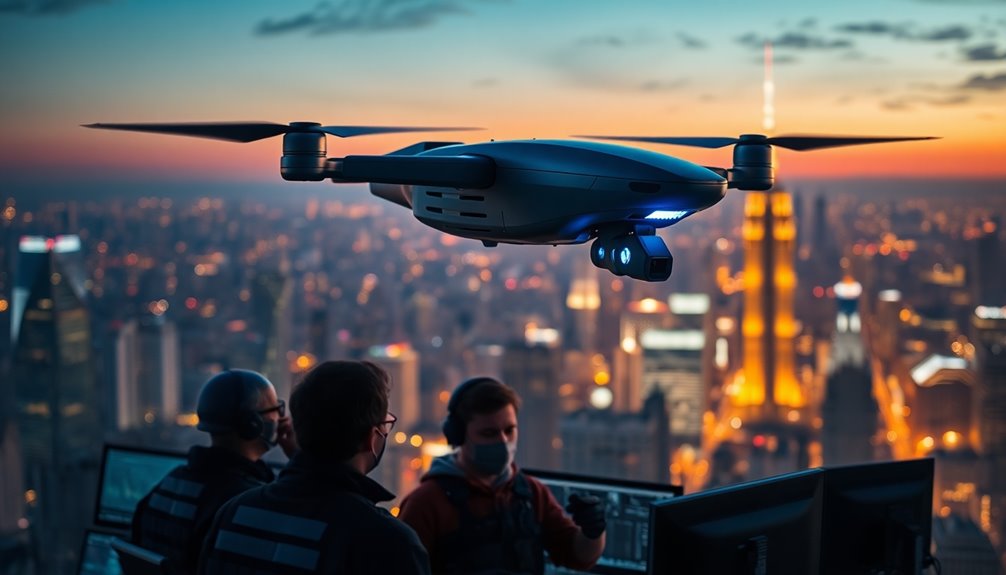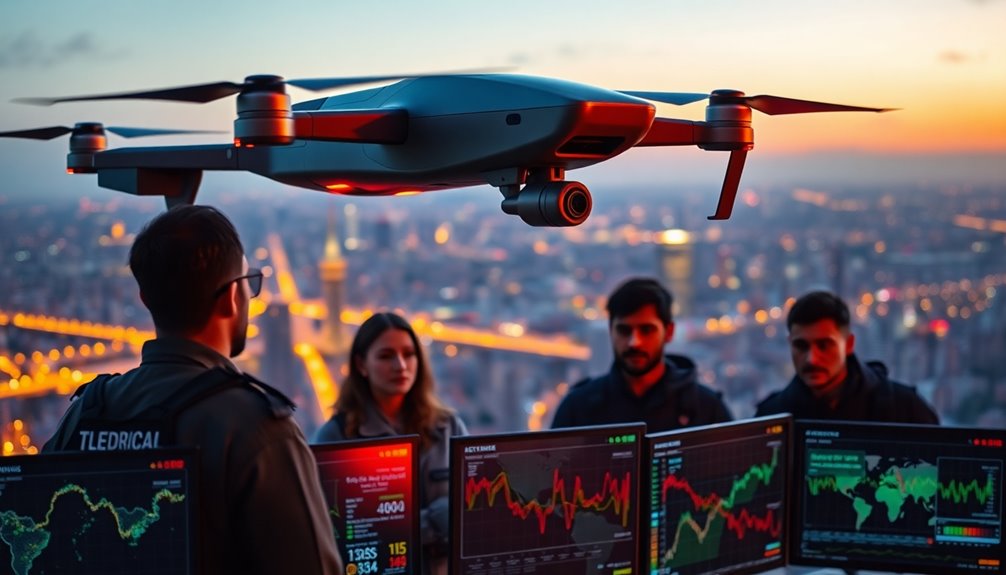
In today’s world, drones rank among the top five security threats, highlighting the urgent need for enhanced drone and cybersecurity measures. You mightn’t realize just how vulnerable critical infrastructure has become due to the rise of these unmanned vehicles. Drones pose significant risks through espionage and sabotage, making it essential to implement robust security protocols.
As you navigate this landscape, it’s crucial to recognize that smart city technologies also face considerable cybersecurity challenges, which can compromise public safety and personal privacy. Espionage and sabotage by drones are identified as a top-five security threat in 2025, emphasizing the need for immediate action.
Emerging technologies offer promising solutions to these threats. For instance, advancements in drone detection, such as RF sensors, radar, and camera systems, help identify unauthorized drones in sensitive areas. Moreover, integrating AI into drone operations not only streamlines navigation but also enhances real-time data processing, allowing for quicker responses to potential threats.
As regulations evolve, particularly with the FAA Reauthorization Act of 2024 paving the way for Beyond Visual Line of Sight (BVLOS) operations, you’ll find new opportunities and challenges arising in the drone sector.
However, regulatory challenges persist. Balancing public safety and privacy while fostering innovation is no small feat. The global regulatory landscape is fragmented, with inconsistent implementations across regions, especially in Europe. Bills like the Countering CCP Drones Bill are shaping the supply chain by restricting the use of foreign-made drones, underlining the importance of national security.
You must stay informed about these developments, as they directly impact your operations, whether you’re involved in public safety, infrastructure management, or any sector utilizing drones.
The push for data security is also crucial. You’ll want to ensure that secure data storage and processing methods are in place to maintain trust in drone-generated information. As organizations scale their drone programs, the need for multi-agency collaboration becomes clear. Interoperable systems will be key to effective public safety missions, particularly in emergencies.
As you consider the future of drones and cybersecurity, remember that innovations are on the horizon. New methodologies are developing to enhance security and reliability in systems, and frameworks like Unmanned Traffic Management (UTM) and U-Space are essential for integrating drones into shared airspace.
Embracing these changes will be vital in strengthening your defenses against the evolving landscape of drone and cybersecurity threats.









